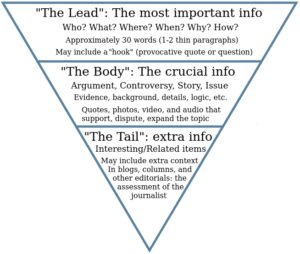In order to reach your full website potential as a business or blog owner online, you need to be able to create amazing content. Creating amazing content allows your readers to feel engaged, active, and informed on all things related to your website.
Content, no matter how long or short, needs to be able to grab the attention of your readers as fast as possible. This, unfortunately, isn’t always easy. In a digital world where there are an estimated 130 trillion indexed website pages, it can feel overwhelming to write anything worthwhile. After all, with numbers like those, everything must have already been written by somebody, right?
Well, in a sense that is and isn’t true. While most topics have already been discussed, you can still find a way to make your content unique and interesting. There are plenty of little content tips and tricks that can make your website or blog content stand out and capture the attention of users. If you are interested in writing content for your own website, here are a few things to keep in mind that will help make your content more engaging.
Structure The Content Properly
Perhaps the most crucial aspect of content writing is the structure of the content itself. Writing in a very targeted and precise manner will help keep the overall ‘flow’ of the content moving forward. There are several key aspects of structure that content writers should always pay attention to, and here are a few of them:
- Keep Important Information At The Top –
The harsh reality is that a lot of users have very short attention spans while reading online. The modern digital age has made us all a bit impatient when it comes to finding and accessing information. If your users need to sift through a large block of text in order to find the details they are looking for, they will simply look elsewhere.
This is why it is important to use the ‘upside-down pyramid’ method. When you think of your content as an upside-down pyramid, you can structure your content in a way that engages users for a longer timeframe. By this, I mean, you should put all of the most important details first, followed by more minute details last.

For example, if you are creating content for a construction service website, you should always list the important details at the very beginning. Example:
- Hours Of Operation
- Phone/Contact Number
- Services Offered
- Locations Serviced
This is the type of information that users want right off the bat, such as those wanting to call straight away. You can focus on putting more detailed text later on the page – make sure to get straight to the point in the first few sentences.
- Keep Sentences Short –
In keeping with the theme of ‘get to the point already’, we have to discuss sentence length. While a sentence can theoretically (but should never) have 50+ words in it, these are not very fun to read. This follows the same mindset of ‘short attention spans online’.
Ideally, content writers should try to keep their sentences to around 25-30 words or less. The shorter and more concise the sentence, the better. This helps to keep the pace of the text moving along quickly, and helps the reader feel engaged. While it may seem annoying to have to continuously break up your sentences, the results will speak for themselves.
In addition to keeping your sentences short and concise, you should also try to break up text into smaller paragraphs. When users venture into a blog or a website, they don’t want to be overwhelmed by massive blocks of text. A seemingly endless wall of text can feel daunting to a reader, and can result in them going elsewhere for their information.
A skilled content writer should always try to keep their sentences to the point, and their paragraphs condensed. This will help the content feel more open, fast, and readable for all audiences. You can always run ‘readability statistics’ on Microsoft Word to see how advanced, or simple, your written text is for the average reader.
- Utilize Multimedia –
Never forget to break up text walls with imagery, or videos. This can help to keep things fresh. When a user is reading your blog post or website content, having some cleverly placed pictures can help get the message across as well.
However, you should remember that imagery does affect website performance. Remember to keep your images as small as possible to avoid any lag or slowdown of your website speeds. Massive images are a key factor in slow performing websites, especially on WordPress.
Create Engaging Content
Aside from the structure of the content, you need to focus on the subject matter and delivery as well. The actual delivery of the content is just as important as how it is presented on the page. In addition, being able to convey your message in a way that users can engage with is crucial. Here are a few tips to make your content itself more engaging:
- Know Your Audience –
It is impossible to write content that engages anyone, unless you know who will be reading it. No, I don’t mean the names and identities of each reader. I am simply referring to your target demographic. Before you start writing any content, you should ask yourself a few questions first. For example:
- What is the age, and gender of the audience I will be reaching?
- What are their geographic location[s]?
- What are their interests, hobbies, and desires?
By knowing who your audience is, you can then begin to communicate more effectively. For example, if you wish to start a blog that focuses on travel equipment for backpackers, you should probably know who your readers are in advance. Female backpackers over the age of 50 might have different desires and values than male backpackers under 25.
It is absolutely crucial that you have a clear picture in your head of who will be reading your content, and where. Then you can begin to create content with that audience in mind, and target their interests and desires.
- Keep Your Voice ‘Active’ –
Readers want to feel as if they are being directly spoken to–even if it is only subconsciously. Most content creation experts will tell you that an ‘active’ voice when writing is always better than a ‘passive’ voice. This means that you should always seek to structure your sentences in an engaging and active manner, rather than passively. Here’s an example:
- ‘It’s easy to buy tickets to our event through the following link’.
- ‘You can easily get tickets to our event by following this link’.
One sentence tells the reader that something can be done easily in general. The other gives them a call to action, and speaks directly to them. You should always try to keep your content as active and engaging as possible, whenever possible.
- Avoid Jargon –
Unless you are a website or blog targeted towards other experts in your niche, it’s best to assume your readers are newbies. Of course, there is always a time and a place for expert opinions among other experts; but generally speaking, the vast majority of your viewers will be people who are searching for answers as newcomers to the niche.
When you are writing a content piece for someone who is looking for answers, it’s best to avoid technical jargon. Try not to get too ‘meta’ with how you present things, and keep answers easily understandable. If you absolutely must use jargon, try to explain what the jargon means in layman’s terms.
In this way, you can remain accessible while also remaining educational. You would be surprised at how much users appreciate being able to find answers in clear, understandable language.
- Use A ‘Call to Action’ –
You always want to finish off your posts or content pieces with a ‘call to action’. A ‘call to action’ can be a short sentence designed to keep your readers engaged, encourage them to share your content, or redirect them to other areas of your website/blog.
Typically a call to action will begin with words such as:
- ‘Download’
- ‘Join’
- ‘Subscribe’
- ‘Share’
- ‘Watch’
- ‘Follow’
These ‘active’ words encourage your readers to do something after they have finished reading your post, or page. This helps give the reader a sense of duty, and a ‘job’ they should accomplish for you. It helps them to feel connected to and invested in the content rather than ‘done’ with it once they have finished reading. Never forget your final ‘call to action’.
Final Thoughts
Creating great written content takes a lot of time, and effort. Not everyone will have a natural affinity for writing right off the bat. It’s important to remember that content writing is an acquired skill, not a talent. It will take hard work on your part to get your own voice, method, and system for content writing down.
Once you have taken the time to practice, you will find that writing content isn’t as daunting as it might have seemed at first. Now all you have to do is open up your note pad and get started! Work on your writing daily, and you will be an expert in no time.

